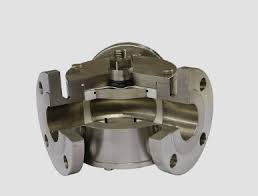What is A Piggable Valve

Pigging refers to the practice of using devices known as “pigs” to perform various cleaning and maintenance operations in process pipelines. Originally pigs were made of straw wrapped in wire and were created to clean process lines. As the pigs traveled through the line a squealing sound was produced. This is believed to be the origin of the unusual process term “pigging”.
Piggable systems offer both product and cost savings on process lines that handle multiple products. At the end of each product transfer, it is possible to clear out the entire line contents with the pig, either forwards to the receipt point or backwards to the source tank. Pigging also offers the additional advantage of a rapid product changeover.
Basically, piggable valve means that a pipeline pig can pass through – i.e. the valve has a bore the same size as the pipeline that it is attached to, and without any obstructions when fully opened. Typical ones that are full bore valves,full bore ball valve, full bore gate valve, full bore check valve etc. A full ball valve is used as piggble ball valve in most applications.
Gate valves that are piggable are called thru-conduit or slab gate valves. The design ensures that a pig will pass through safely without getting stuck.
In addition to selecting a piggable valve it should be checked that the end user accepts the valve and has a pigging process with a pig that will not be damaged by the valve and vice versa: that the pig will not damage sealings and inner surface of the valves.
All Relia ball valve and check valves are piggable when required, the minimum bore size of those meet the latest edition of API 6D specifictions.
The Applications of Piggable Valve
Piggable valves are versatile pipeline components that allow the insertion of inspection and maintenance tools, known as “pigs”, into the flow. This enables operators to monitor pipeline integrity and perform cleaning or other procedures without disrupting service. Piggable valves are commonly used in oil, gas, and water transmission pipelines to facilitate inline inspections and maintenance, improving safety and operational efficiency.
How to Select the Right Piggable Valve
When selecting a piggable valve, key considerations include the pipeline size, pressure, and media. The valve material and design must be compatible with the operating conditions. Other important factors are the valve’s flow capacity, ease of pigging, and maintenance requirements. Consulting with valve experts can help determine the optimal piggable valve for a specific application to ensure safe and reliable pipeline operations.
